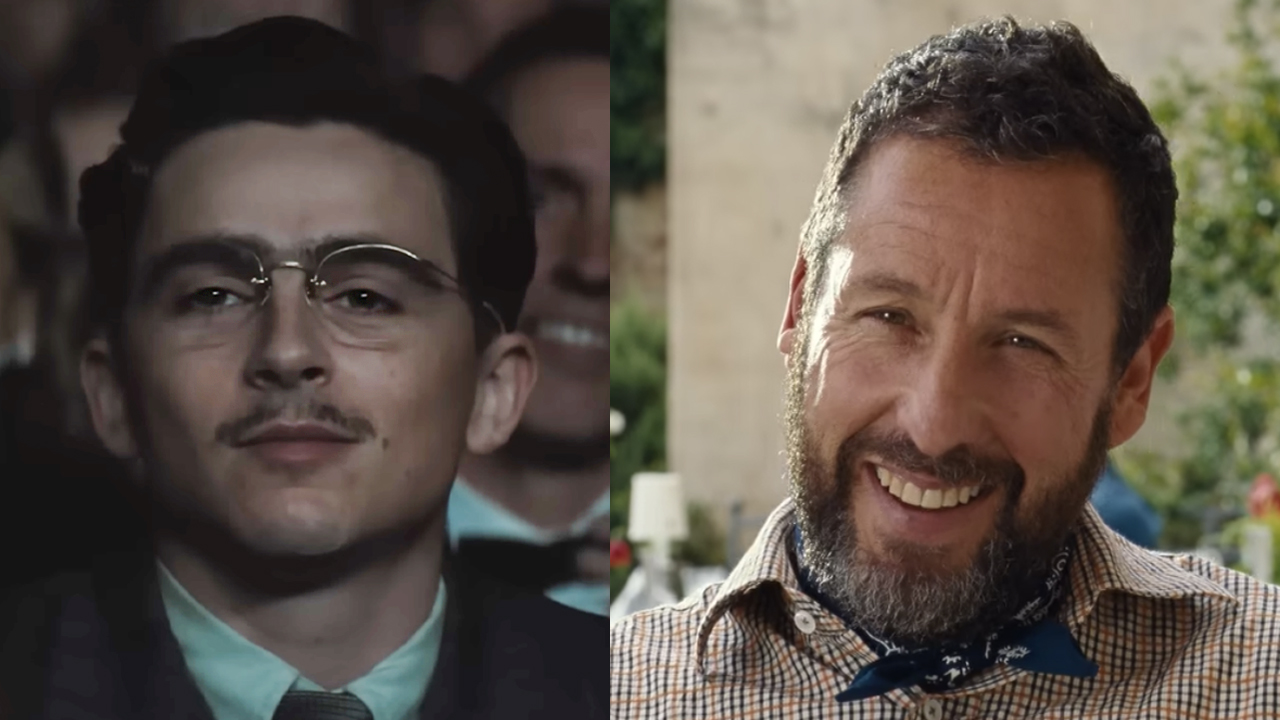In separating his sex opus Nymphomaniac into two parts, director Lars Von Trier is given the ultimate license: what was backdrop before will now consume the picture. And that backdrop is naughtiness, transgression and full-immersion bad behavior.
If Nymphomaniac: Volume One is an appetizer, Nymphomaniac: Volume Two is the proud main course. Von Trier has a background in pornography, even forming his own production company dedicated specifically to skin flicks. What's clear about his technique is that he understands set-up and payoff, titillation versus money shots. An abrupt, context-less insert at mid-film, revealing heroine Joe (Charlotte Gainsorough) setting fire to a car as a live version of the Talking Heads' Burning Down The House plays, reveals Von Trier's patience as academic: breaking the monotony is not a matter of content, but rhythm. That first film was about seduction. This one is about fucking.
At the close of Volume One, Joe was still narrating her life story to kindly, virginal Seligman (Stellan Skarsgard), while her younger counterpart (Stacy Martin) develops a cold numbness to her extremities. Bedridden older Joe keeps jumping around in the story – a cheeky flashback to a teenage orgasm oddly punctuates this tragedy. But what startles is not young Joe's paranoid, frantic masturbation, but how casually it slips from the everyday conversation.
In deep lust with lover Jerome (Shia LaBeouf), Joe still engages in flirtatious games with him: one stunt involving silverware (which earns a Hall Of Fame-worthy double-take from the legendary Udo Kier) very much reminds of the bawdier adventures in the films of Tinto Brass, particularly in its ribaldry placed against over-exposed daytime lighting and sharp primary colors.
The color scheme is not an accident: Joe's home with Jerome is nakedly taupe, grimly flat tones that seem oppressive when the two of them argue. An interracial threesome hook-up skirts offensiveness, though the flat hotel room setting helps turn the sight of two bobbing, swollen cocks into a comic farce, particularly foregrounded against Joe's bored head-in-hand. By the time she surrenders to BDSM at the hands of an abuser (Jamie Bell, upsetting), it's in an apartment that perversely looks like a claustrophobic classroom, the walls mixing grays and cobalt blue. She doesn't need colors anymore: she needs blunt force trauma. Pity whomever's bare bottom was exposed for so long in order to believably recreate a series of Pasolini-themed violent lashings.
It's hard to pinpoint exactly what part of Nymphomaniac is meant to be a straight narrative or simply Joe's elaborate lies. She openly picks apart the contents of Seligman's barren apartment to provide context and flavor for her stories, at one point remarking how she's beginning to run out of ideas. LaBeouf has most of his scenes with Martin, and LaBeouf keeps playing the character as Martin ages into Gainsborough, but it's only later when LaBeouf is switched out for an actor maybe five or 10 years older; meanwhile, their infant child doesn't age all that quickly. In Volume One Joe claims to be taking eight to 10 lovers a day. Are we really expected to believe that her encounter with the sadist played by Bell is the first time she's interacted with an abusive dominant male?
Ultimately, Joe is a contradiction, one that Von Trier wholeheartedly embraces. He has Gainsborough stand during a Sex Addicts Anonymous meeting and disavow herself of their morality. But she also considers her acts sinister, unavoidably dark: her BDSM meetings occur in the middle of the night as her child sleeps quietly at home.
Your Daily Blend of Entertainment News
His Joe defies categorization, and accordingly, he defies diagnosis. When she retreats to memories of her father, it initially feels like cheap theatricality. But Von Trier cares about the small stuff: the pressing refusal of Von Trier to imply there's something inappropriate going on between Joe and her father (Christian Slater) would be too obvious. Their love already leans towards the incestuous in their exchanges and mutual fondness: to make this violation explicit is to cheapen and simplify the monster that Joe thinks she's become.
By that same token, Von Trier utilizes an ending that will have you arguing over his intentions, the greatest hope we can expect from any contemporary films. Without revealing how Joe has ended up in Seligman's bed, there are clearly two options: one, Von Trier is taking masculinity to task. The film stops several times to remind us that Joe's transgressions would not be so upsetting had they been committed by a man, even if Von Trier is shrugging and saying, “What transgressions?” Or, ultimately, two: Joe is the designer of her own martyrdom, eager to present herself for the discipline of others.
I haven't seen the two Nymphomaniac pictures back to back, but I'm intrigued about the potential for which side to support after a long film – it seems easier after only one volume, limiting the amount of sexual conduct partaken by Joe herself, and all its accompanying baggage (society would judge Joe more harshly than a man for some of these actions, but some of them remain unforgivable regardless). Von Trier seems to cast his lot with Joe as kindred spirit, but a cruel punchline ending provides uneasy punctuation.
Perhaps he thinks the worst of us? Maybe that sharp divide allows us to figure out who Joe wants to be. And maybe Von Trier is claiming it is fate that has resulted in Joe's fall from grace, broken in that alleyway and rescued by the non-judgmental Seligman. With friends, it's worth debating. Over time, it will be something to cherish.

